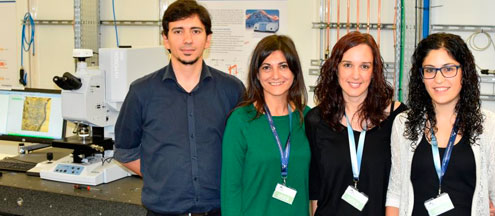ALBA Synchrotron

MIRAS, devoted to infrared spectroscopy and microscopy, is the 8th operating beamline at the facility. Researchers from the Institute of Advanced Chemistry of Catalonia (IQAC-CSIC) have used infrared light for analysing the penetration and distribution of different of lipid systems to target different skin layers. The results of this study will contribute to improve the treatment of skin disorders and could have applicability in the dermatological and cosmetic fields.
From 12th to 16th October 2016, the ALBA Synchrotron is hosting the first official users at its 8th beamline, . Devoted to synchrotron infrared microspectroscopy (SIRMS), this new beamline is now available to the scientific community for conducting experiments in a wide range of areas such as materials science, biology and biomedicine, geology, cultural heritage or environmental sciences, among others.
This new tool is very powerful detecting and quantifying molecules and its spatial distribution. Therefore, MIRAS is key for defining the chemical composition of materials at a molecular level with a lateral spatial resolution reaching 3 micrometers.
MIRAS is the first phase-II beamline open at the ALBA Synchrotron. It was initiated in 2014 and, once the installation of the in-tunnel components and the beamline set-up were finished, the commissioning and friendly user experiments started in mid 2016.
The experiment started on 12th October is the first official experiment in the beamline that will host many others in 2016 and in the first half of 2017 (whose proposals are now being evaluated).
A chemical map of the skin
For 120 hours, a group of researchers from the Institute of Advanced Chemistry of Catalonia (IQAC-CSIC) will be using the MIRAS beamline for performing an experiment that analyses how different lipid systems, developed in the research group, are located into the skin.
The infrared beam is focused on porcine skin samples. By studying how infrared light interacts with the samples, spectra and images of the spatial distribution of the lipid systems are obtained. Thanks to the high resolution and large brightness of synchrotron light, it is possible to define the localization of those lipid systems in the different skin layers, generating a chemical map of the sample, where to analyse their level of penetration.
The main benefit of this research is to test the effectivity of these lipid systems as carriers of active ingredients to the different skin layers.


Left, Olga López from the IQAC-CSIC examining one of the obtained spectra. Right, group photo of the users from IQAC-CSIC and the responsible of the beamline, Ibraheem Yousef.